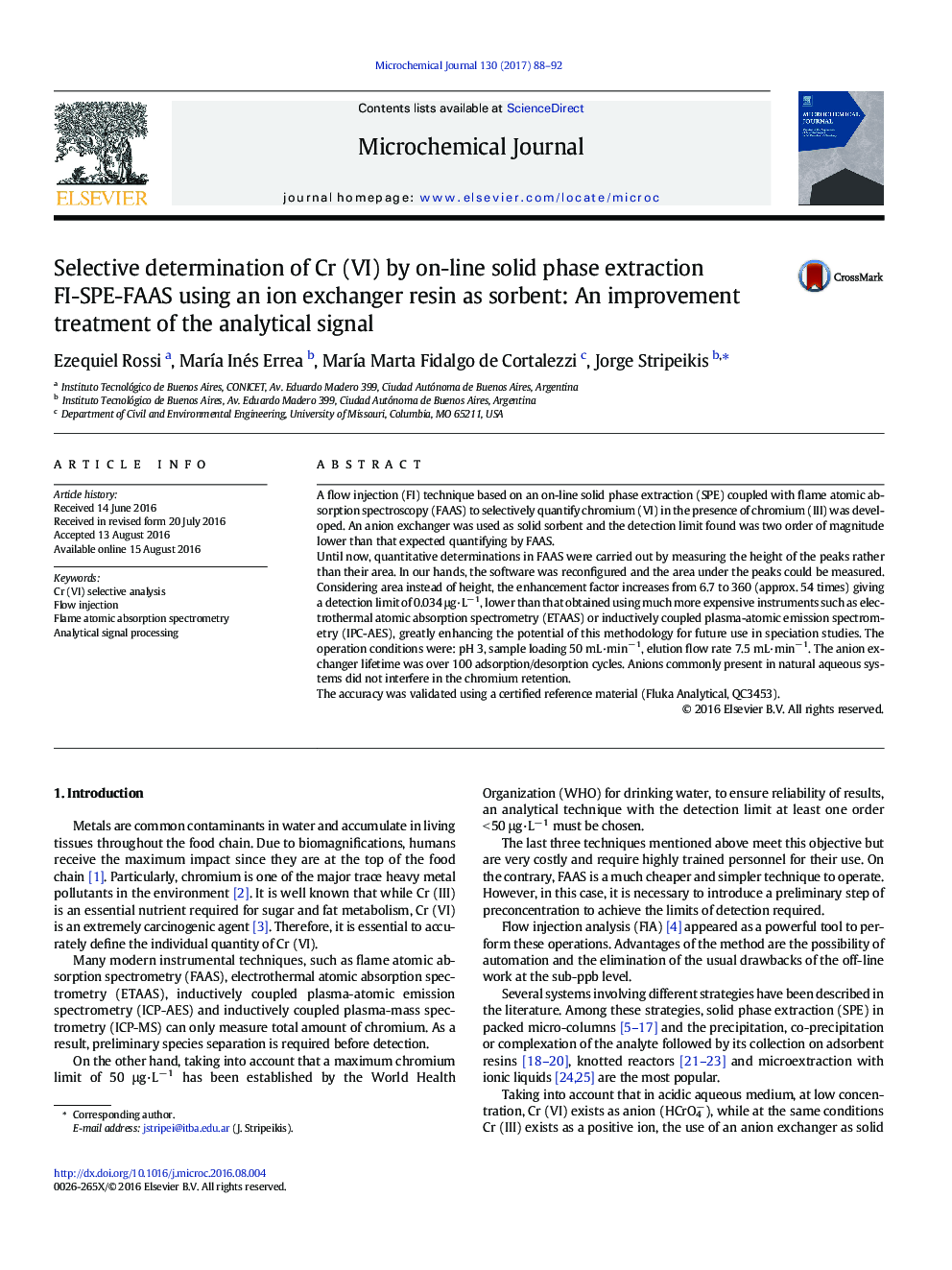| Article ID | Journal | Published Year | Pages | File Type |
|---|---|---|---|---|
| 1227483 | Microchemical Journal | 2017 | 5 Pages |
•A strategy for selective determination of Cr (VI) was developed.•The method was based on a FI-SPE-FAAS system.•An anion exchanger was used as solid sorbent.•An improvement treatment of the analytical signal is reported.•The limit of detection was two order lower than that expected quantifying by FAAS.
A flow injection (FI) technique based on an on-line solid phase extraction (SPE) coupled with flame atomic absorption spectroscopy (FAAS) to selectively quantify chromium (VI) in the presence of chromium (III) was developed. An anion exchanger was used as solid sorbent and the detection limit found was two order of magnitude lower than that expected quantifying by FAAS.Until now, quantitative determinations in FAAS were carried out by measuring the height of the peaks rather than their area. In our hands, the software was reconfigured and the area under the peaks could be measured. Considering area instead of height, the enhancement factor increases from 6.7 to 360 (approx. 54 times) giving a detection limit of 0.034 μg·L− 1, lower than that obtained using much more expensive instruments such as electrothermal atomic absorption spectrometry (ETAAS) or inductively coupled plasma-atomic emission spectrometry (IPC-AES), greatly enhancing the potential of this methodology for future use in speciation studies. The operation conditions were: pH 3, sample loading 50 mL·min− 1, elution flow rate 7.5 mL·min− 1. The anion exchanger lifetime was over 100 adsorption/desorption cycles. Anions commonly present in natural aqueous systems did not interfere in the chromium retention.The accuracy was validated using a certified reference material (Fluka Analytical, QC3453).
